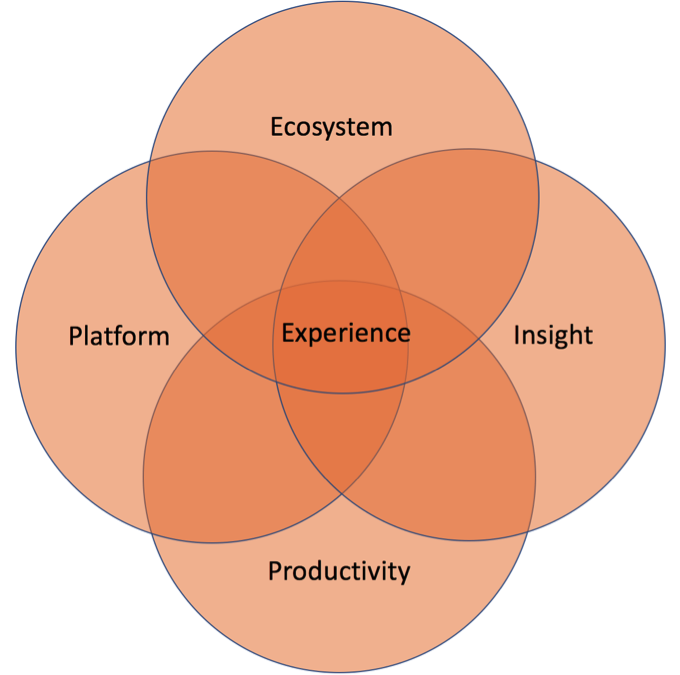
by twieberneit | Jun 6, 2019 | Blog |
As it is the case for most of my colleagues I regularly get pitched by businesses about customer experience news that they want to talk about and that normally are pretty interesting. So, also a few days ago, when I got pitched by AR relations of a major European bank that wanted to talk about a new partnership and “what personalisation tech can offer in terms of a way to side-step legacy tech barriers to provide meaningful customer engagement that goes far beyond “Dear Joe” but that provides customers with what they need, when they need it”. The backdrop of this story is, of course, the advent and rise of fintechs like Revolut, N26, or Monzo. These are the ones that got named in the pitch and that are representatives of many more fintech companies that are disrupting traditional banking. We could add some more like Weltsparen, Transferwise, and other services that target at disrupting one or the other part of banking. And banking is surely an interesting sector of B2C as well as B2B business that is highly regulated, often very conservative, and burdened with legacy IT systems, to name but a few challenges facing banks. All these topics are making them an interesting target for nimble companies that, amongst others, are engaging with their customers in a highly personalised manner. This is very much in line with the research report by Epsilon that got quoted in the pitch. Consequently, personalisation is a very good start. However, there is more. The model of the quoted fintechs is not only to provide a high degree of personalisation. They are...

by twieberneit | Apr 28, 2019 | Blog |
Returning from an interesting SAP Now event in Berlin with a strong attendee focus on customer experience is the perfect opportunity to start thinking about how to thrive as a company in the age of the customer. Being busy with and at our own valantic booth and an exciting IoT-Chatbot showcase I sincerely could not attend as many presentations as I wanted to. First let’s establish what the age of the customer means. What is the age of the customer? A few years ago the term ‚the customer is in control’ was coined. This was back in the first hype around social media, around the same time the term ‚social CRM’ got created. Some companies, for example Microsoft, are still using it. In the beginning ‚the customer is in control’ referred to the idea that social media put customers in a far more powerful position vs. businesses, because the higher reach that social media offered, changed the balance of powers between customers and vendors. Or so vendors of enterprise software argued. The ‚customer being in control’ is certainly one way to describe an age of the customer, even a very strong one. Forrester Research is somewhat more balanced. Forrester describes the age of the customer as the combination of a shift of power from institutions to customers and the disruptive forces of digitalization. This combination would “alter market fundamentals and force companies to change strategic direction and rethink operating models”. As part of the vivid discussion following my post Ten Questions you always wanted to ask about CX on CustomerThink, Harley Manning, VP and Research Director covering customer experience...

by twieberneit | Feb 24, 2019 | Blog |
This is a slightly enhanced (and translated) transcript of an interview about customer experience I did for valantic. The interview challenge was to stay short and concise, and to keep it within two minutes. In order to not lose the spirit of this 120 second challenge, I kept the transcript short. This might raise a question or two. Happy to discuss, as always. So, interviewer, let’s get going! What’s the meaning of the claim ‘The Age of the Customer’? ‘The Age of the Customer’ is a term that is roughly synonymous with ‘The Customer is in Control’. Both terms basically express the notion that today’s customers have far better access to information than they had a decade ago, before the social media and mobile revolution. An important consequence of this revolution is that customers’ trust business statements about their products and solution is far lower than in earlier times. What does this mean for businesses? That is simple. The knowledge advantage that businesses have has decreased considerably. With that the possibility of businesses to distinguish themselves based upon their products and services shrinks. Therefore businesses must appear far more authentic and focus on an engagement model that fits their brand; this in a way that results in a positive perception by customers. Customer Experience Management – What do you think of this term? I do not like the term customer experience management as the customer experience is solely in the realm of the customer. What a business can do is engage with customers in a way that with a high likelihood results in a positive experience. I prefer the...

by twieberneit | Sep 11, 2018 | Blog |
More Food for Thought In the last article Clash of Titans – Microsoft and SAP weigh in of this little series, I discussed the strategy of two of the big four and how they are positioned in the platform play of the business software titans – and others. This article covers the other two: Oracle and Salesforce. These business software vendors are competing in a market that is changing – commoditizing – at a fast rate towards an experience market, and probably beyond, if I follow the argumentation and thoughs of CRM godfather and friend Paul Greenberg. Business application vendors can stay really successful only if they morph into platform players. And this platform is more than just a technology platform, but encompasses four dimensions. The four dimensions that are paramount to be able to deliver great engagements that result in lasting positive experiences are Platform (IaaS/PaaS) Ecosystem Insight Productivity In this article I look at Oracle and Salesforce and how they position themselves in this game of thrones. But now, without further ado, let’s dig into the topic. Oracle Since the launch of what originally was project Fusion and now is Oracle CX, the company has done a remarkable pivot from being an on premise company to becoming a cloud company. The company has its strength in being a full stack provider with a full range of business applications. However, its main strenght is owning the gold standard database engine that runs the majority of business workloads worldwide. From its overall technological profile one could position Oracle somewhere between SAP and Microsoft as it with Open Office also...

by twieberneit | May 23, 2018 | Blog |
As you might guess if you have read a few of my posts, I am not a person that is adverse to CRM and other customer facing technology that help improving the value created for said customer. Well, I am working in the CRM arena for more than twenty years now. A good part of what I am currently working on involves marketing automation software. And frankly, a lot of what I see and am allowed to do with and for forward-looking companies is just amazing! However! Talking to CEO’s and executives of CRM- and marketing automation companies about the European General Data Protection Regulation GDPR, I repeatedly heard statements like “it is a way for lawyers to make money”. And they probably are right with this assessment. Why? Because too many executives still bet their house on this law being a toothless tiger, or being under the radar; or they are claiming ‘legitimate purposes’ according to sentence f of section 1 in article 6 of the regulation, to justify their collection of data. Their legitimate purpose being the ability to serve targeted – or in new lingo relevant – advertisements. And I am sure they have some guidance by their lawyers, when arguing like this. However, there is the caveat to these legitimate purposes: the overriding “interests or fundamental rights and freedoms of the data subject which require protection of personal data”. Soon we will find out how serious the GDPR is taken by the European Union – whether it is a roaring lion or a toothless tiger. There are only a few days left until this law...






